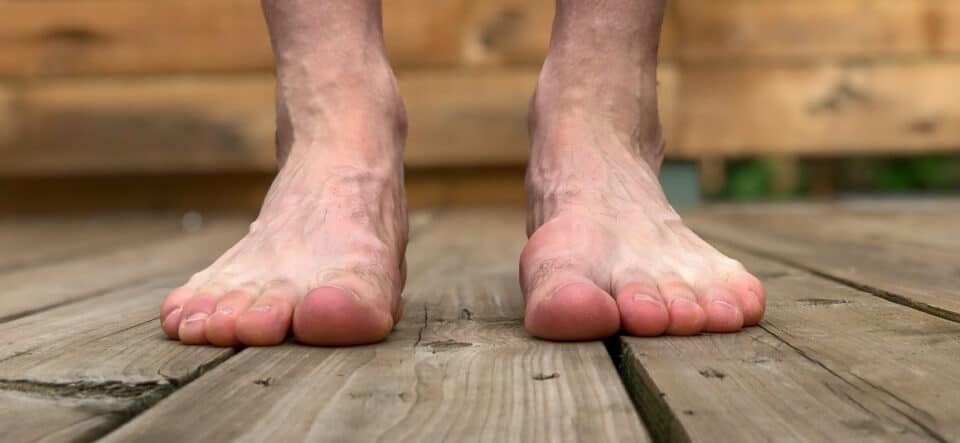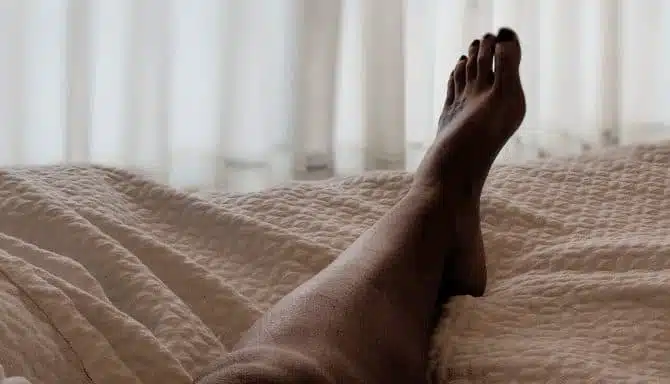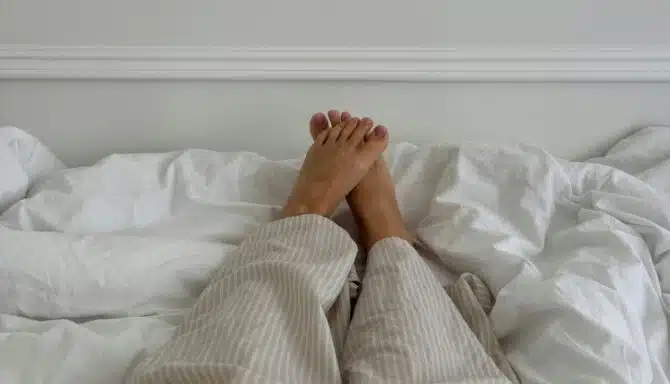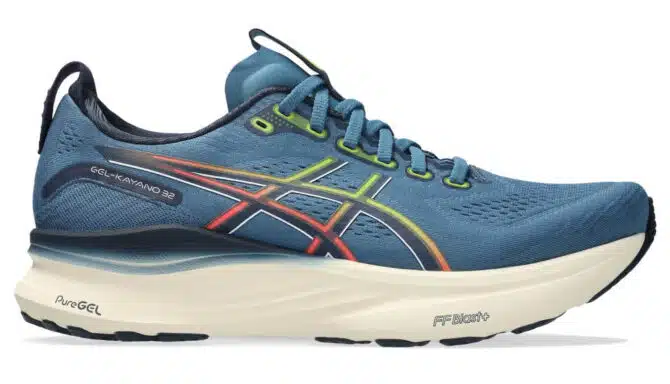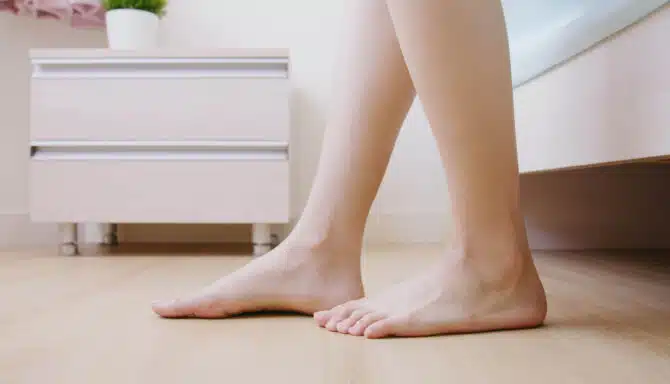Ask anyone their shoe size and they can likely fire it off in a moment’s notice. How about the width of their feet? Wide feet and narrow feet are less talked about.
When finding proper footwear, it’s not just the length that matters. The width of our feet is just as critical. Typically foot width falls into three categories: wide, regular, and narrow. Some footwear brands offer wide or narrow versions of their products. In other cases, they may have a specific nomenclature to denote wide or narrow products. 10W, for example, is a wide size 10.
It’s no wonder that shoe size is a more common categorization of our feet. After all, our shoes are measured in a way that allows us to seamlessly pick and choose footwear. Unlike clothing – measured by XS, S, M, L, or XL, shoe size is measured numerically. Here in Canada, we share a system with the U.S., while the UK and Europe have their own measuring system that requires conversion calculations for equivalents.
The Brannock Device is the most popular tool for measurement. The device has both left and right heel cups and is rotated through 180 degrees to measure the second foot. This allows for a measurement in cm, which translates into a shoe size. (4-12 for women, and 6-16 for men, typically.)
Next, we get into how to measure your feet, and how to accommodate both narrow and wide feet.
How do I measure my feet?
The first option is to do it professionally. Here at Toronto’s leading foot clinic, we offer every customer a comprehensive footwear assessment free of charge to ensure that you invest in the healthiest footwear for your feet. Our footwear specialists and chiropodists will help match your foot shape, structure, and alignment to specific shoes and footwear features that answer your corrective, supportive, or accommodative needs.
The second way to measure your feet is to DIY.
- Get a ruler, marker, and piece of paper.
- Place the paper flat on the ground and stand on it. Make sure your foot is flat.
- Make a mark behind your heel and another in front of your longest toe. If one of your feet is larger than the other, use the longer foot to measure your size.
- Measure the distance between the two lines in inches or centimetres.
Using the measurement in cm (or inches), convert the foot length into the corresponding shoe size.
Women’s Shoe Size Chart
| US | EU | UK | FOOT LENGTH (approximate) |
| 6 | 36-37 | 4 | ~8.75 in / 22.5 cm |
| 6.5 | 37 | 4.5 | ~9 in / 23 cm |
| 7 | 37-38 | 5 | ~9.25 in / 23.5 cm |
| 7.5 | 38 | 5.5 | ~9.375 in / 23.8 cm |
| 8 | 38-39 | 6 | ~9.5 in / 24 cm |
| 8.5 | 39 | 6.5 | ~9.75 in / 24.6 cm |
| 9 | 39-40 | 7 | ~9.875 in / 25 cm |
| 9.5 | 40 | 7.5 | ~10 in / 25.4 cm |
| 10 | 40-41 | 8 | ~10.2 in / 25.9 cm |
| 10.5 | 41 | 8.5 | ~10.35 in / 26.2 cm |
| 11 | 41-42 | 9 | ~10.5 in / 26.7 cm |
Men’s Shoe Size Chart
| US | EU | UK | FOOT LENGTH (approximate) |
| 7 | 40 | 6 | ~9.6 in / 24.4 cm |
| 7.5 | 40-41 | 6.5 | ~9.75 in / 24.8 cm |
| 8 | 41 | 7 | ~9.9 in / 25.2 cm |
| 8.5 | 41-42 | 7.5 | ~10.125 in / 25.7 cm |
| 9 | 42 | 8 | ~10.25 in ~26 cm |
| 9.5 | 42-43 | 8.5 | ~10.4 in / 26.5 cm |
| 10 | 43 | 9 | ~10.6 in / 26.8 cm |
| 10.5 | 43-44 | 9.5 | ~10.75 in / 27.3 cm |
| 11 | 44 | 10 | ~10.9 in / 27.8 cm |
| 11.5 | 44-45 | 10.5 | ~11.125 in / 28.3 cm |
| 12 | 45 | 11 | ~11.25 in / 28.6 cm |
| 13 | 46 | 12 | ~11.6 in / 29.4 cm |
How do I measure the width of my foot?
The width of your feet is the distance between the two widest parts of your foot. This is likely a single measurement in one area—at the base of your toes, called the ball width. This is the measurement between the big toe joint and the small toe joint.
To measure the width of your foot, follow these three steps:
- Place a large piece of paper on an even surface.
- Stand on the paper and trace an outline of your foot on the paper.
- Measure the distance between the widest parts of your foot.
Do both feet. If one is wider than the other—which is totally normal—then account for the wider of your two feet.
Why do I have wide feet?
Remember, there’s no one size fits all. Everyone has a unique foot size and shape, which can be attributed to a specific cause or be less known like genetics and ageing. A few causes of wide feet include:
- Genetics. Some people are born with wide feet. Alternatively, people with flat feet (collapsed arches) are prone to having wide feet.
- Age. As we age, our feet change. The ligaments and tendons loosen, and our feet tend to grow longer and wider as our arch collapses.
- Foot deformities. Foot conditions like bunions, calluses, and hammertoes can affect the shape and anatomy of your foot. As a result, your foot may widen.
- Improper footwear. Shoes make a difference. In fact, studies have shown 63-72% of people don’t wear footwear that fits their foot properly. This no doubt can lead to foot deformities.
- Pregnancy. During pregnancy, a hormone named relaxin causes ligaments and joints to loosen around the feet. Like in ageing, the loosing of the tendons causes your feet to widen. This is especially true during the second and third trimesters.
- Swelling. Edema, a medical term for “swelling,” can cause your feet to widen. This can be a long-term condition or a short-term phenomenon depending on the cause.
How about if I have narrow feet?
Narrow feet are quite common. In fact, an early-2000s study found that roughly 33% of women have narrow feet, a figure that is likely underreported. People with narrow feet will find that they have extra room on both sides of the shoe. To accommodate for the fit, narrow shoes are typically 1/4 inch narrower than regular shoes, and 1/2 inch narrow than wide shoes.
Footwear that is too big or wide for your feet can cause issues like blisters, corns, black toenails, and calluses.
For people with narrow feet, like for brands that make footwear in AA (narrow) or AAAA (super slim). Looking for the proper footwear? Visit our clinic at 2481 Bloor St W, Toronto, ON M6S 1P8 for a full selection of leading orthopedic footwear.
Alternatively, look for shoe inserts that can help customize the fit of your shoe to your liking. This will help expand the selection of shoes you can wear, while also taking into account the width of your feet.
What if I have narrow feet and bunions?
If you have narrow feet, you’ll still need to accommodate for Bunions as shoes need to account for the width. Ironically, bunions can be partly attributed to slim-fitting shoes. Over time, ill-fitting footwear can cause your toe joints to shift, causing a bunion. Or, if you already have a bunion, constant aggravation from small shoes can exacerbate the condition.
Need your feet measured properly? Get a professional to do it!
Our team is trained to handle any and all your foot health concerns. From mild, to critical, we cover all sides of the foot needs spectrum. Call us to ask about actionable steps towards your solution today!
Call us at 416-769-3338 or Book Your Assessment Today!
